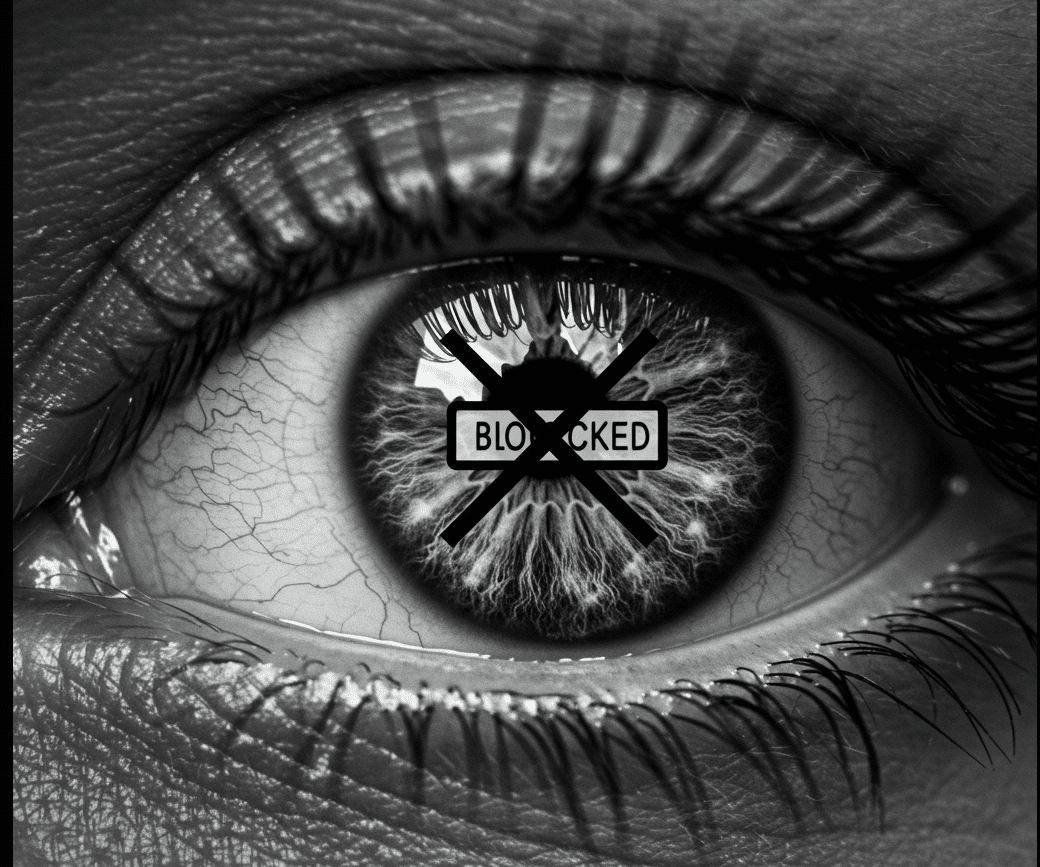One way to raise brand awareness and create interest in your products and services is to use branded content. Branded content is a paid strategy designed to reach audiences through media creation. Let’s take a closer look at branded content and some examples of it.
What Is Branded Content and Is It Right for Your Business?
When you use branded content as part of your strategy, you pay others to create content using some type of media platform. It also doesn’t have to be created by someone else. You can host your own branded content, although you might pay others to produce it. Branded content can include paying an influencer to create content around your brand or creating a podcast that uses your brand.
Branded content can be a way to reach new audiences. It’s not usually designed specifically for sales, although it can get people into your funnel. Instead, the goal is often to raise brand or product awareness at a lower-funnel level. About 31% of brands use branded content to increase product consideration, while 29% use it to drive sales.
If you’re trying to bring more attention to your product or service, and you have the budget for it, branded content might be one way to get new potential customers to engage.
Branded Content Examples
Branded content should be entertaining and interesting, and speak to the shared interests of the audience. Here are some examples of branded content.
Mattel: Barbie Movie Partnerships
Type of content: Social media posts
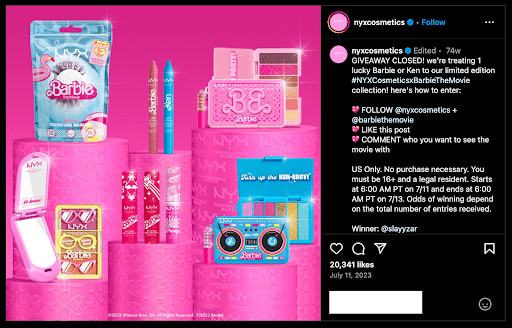
Ahead of the 2023 release of the Barbie movie, Mattel had more than 100 partnerships with various brands. One of the biggest campaigns was a branded content strategy on Instagram. Mattel got different accounts to create content around Barbie and the movie and share.
This approach worked well because Mattel could flood Instagram with branded content based on Barbie. Some partners offered giveaways, which drummed up more interest. Barbie grossed more than $1 billion worldwide, and part of that was attributed to how Mattel deluged social media with branded content partnerships.
However, you don’t need Mattel’s huge budget to have a successful campaign. Look for others that align with your brand and products, and they can create content that appeals to their audience and raise awareness.
Zelle: Explainer Series on Scams
Type of content: Website
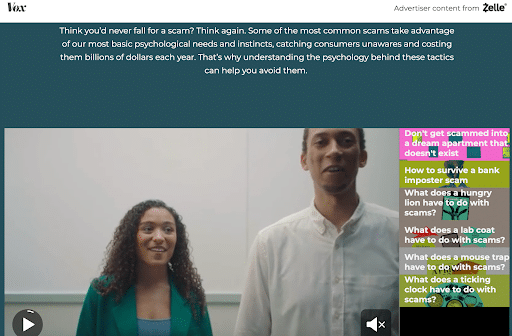
Person-to-person payment bank app Zelle partnered with Vox to create branded content around scams. The series, The Science Behind Scams, was a separate website that included videos and quizzes designed to educate people about scams in an entertaining and relatable way.
This branded content provided useful and actionable content while building trust in Zelle’s brand. If you have useful knowledge to share, branded content can help you get the word out and show your audience that you’re a viable resource.
Red Bull: Adventure Videos
Type of content: YouTube videos
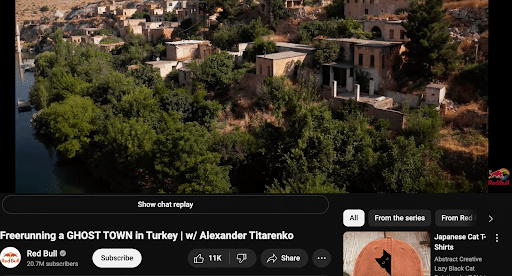
Rather than have others create content and host it on their own sites, Red Bull has creators participate in making videos and then host them on the Red Bull YouTube channel. The videos aren’t sales, nor is there product placement. In fact, the videos just look like regular adventure videos.
Red Bull does well to host these videos featuring interesting people and locations. It gets people to their YouTube channel, where they can see more videos in the series, be directed to Red Bull TV, or go to the Red Bill Twitch channel.
This content is designed to get people into the Red Bull ecosystem and associate the brand with adventure sports. Consider your brand perception and how you can collaborate with others to create engaging content that reinforces the feel of your brand.
Honda: Battle of the Bands
Type of content: Event, docuseries
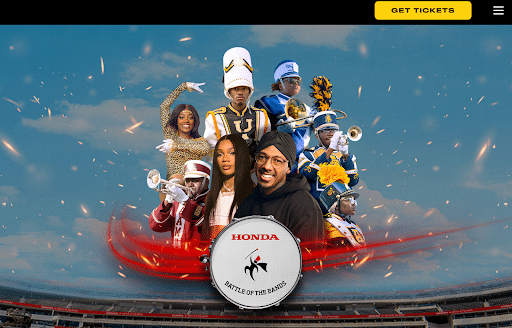
Honda partners with Historically Black Colleges and Universities (HBCUs) to put on an event designed to bring excitement and awareness to HBCU marching bands. You can buy tickets, watch bands from different schools and participate in a rich tradition.
In addition to the event, Honda has a website and even created a docuseries dedicated to the Battle of the Bands and the legacy of HBCUs.
This branded content positions Honda as a supporter of the arts and connects the brand to a community of potentially loyal customers.
Knorr: Yummy Ks
Type of content: TikTok videos
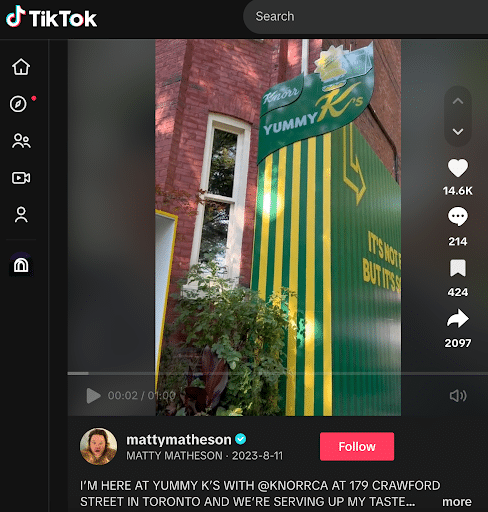
Knorr put together a partnership with Matty Matheson, a chef and cast member on the popular show The Bear, to promote its in-person takeout location in Toronto, Yummy Ks. The TikTok video features Matheson visiting Yummy Ks and talking about it.
The location is designed to highlight the recipes that people can make with Knorr products. In fact, not only did Matheson share on TikTok, but he also helped develop the menu at the takeout place, and Knorr shared the recipes and provided the food in branded packaging.
This branded content was designed to bring Knorr to relevance to a younger generation. Knorr’s research indicated that younger consumers are more likely to look for recipes on social media, and this campaign was designed to encourage connection with a new audience and encourage them to make simple foods with recipe starters from Knorr.
If you can find a pain point for an audience and offer something simple to solve the problem through branded content, it’s one way to create a lifetime connection.
Dove: #showus
Type of content: User-generated social media
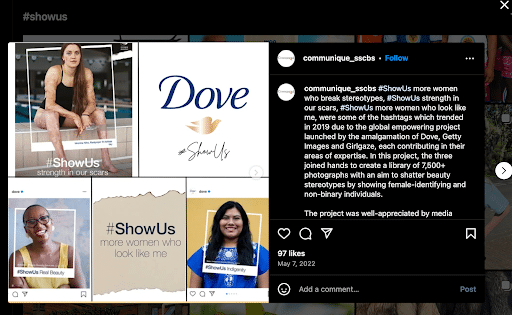
In 2019, Dove’s popular #showus campaign encouraged user-generated content with a specific hashtag. The branded content tapped into a movement against traditional beauty standards for women-identifying and non-binary people.
Dove also created videos featuring some of those who shared. However, the real marketing genius was in how many people shared their own photos with the hashtag, creating a connection to the brand and raising awareness. Users created the content on their own, contributing to a successful movement as well as a marketing campaign.
If you can inspire users to create content around your brand, and you have a hashtag or handle they can use for a cohesive effort, you could potentially raise awareness of who you are and connect yourself to a movement.
Mistakes to Avoid When Creating Branded Content
When creating branded content, it’s important to focus and be clear about what you’re doing. You also want to avoid common mistakes that can lead to failure:
- Setting up the brand as the hero: Pushing the brand as some type of hero is a good way to turn people off. The focus should be on the creators or the subjects. Red Bull and Honda do this well, positioning others as the main people to watch, with minimal mention of the brand or what the brand is doing.
- Being overly promotional: Don’t be too salesly or promotional in branded content. The idea of branded content is for people to engage with the content without suffering through a sales pitch. Even though the Knorr and Barbie content was branded, the focus was more on what you could get — recipes and food, or a giveaway of products.
- Failure to research: Research which partnerships make the most sense for you. Find out what the audience is most interested in and their issues. Zelle created branded content with Vox to solve the pain point of scams. They know what the Vox audience is interested in and created something useful.
- Focus on format over story: Don’t get stuck on video versus Instagram post. Instead, think about the story. There should be a narrative you want to tell. Choose a format that fits the narrative.
The Future of Branded Content: Trends to Watch
If you decide to implement a branded content strategy, it’s important to pay attention to trends. What worked in the past might not be the way forward in the coming years. Some of the biggest trends to consider when creating branded content include:
- Micro-moments: As attention spans shrink, branded content is likely to focus on short, punchy content that captures the small moments. For example, attention spans have dropped to less than a minute from more than two minutes 10 years ago. Shorter content that gets to the point and is immediately entertaining is more likely to engage and connect with audiences.
- Long-form video: It seems contradictory, but long-form is also seeing a resurgence. Even TikTok has been lengthening its available videos and Reels can be longer. However, the content will need to be engaging and useful. Micro-moments can snag attention and entertain, but the longer videos will provide a way to gain trust through providing useful information.
- Authenticity: Rather than being airbrushed and perfect, look for imperfect, authentic content. This authenticity, even if it contains “mistakes” is likely to build trust, especially if you focus on user-generated content.
- Personalization: Branded content will look like it was meant for you, catering to your interests and values. When you create branded content, make sure you understand the data behind why people in the audience make their choices so that the content seems personal.
Key Takeaways
Branded content can be a way to reach new audiences and help them feel connected to you. It’s not meant to be overly promotional, but it can serve as a way to raise brand awareness and get people into your funnel.
Frequently Asked Questions (FAQs)
Do I need to use an agency to produce branded content?
No, you don’t need an agency to produce branded content. You can produce it on your own, or create a user-generated campaign that encourages others to participate.
What is the average ROI of branded content?
It’s hard to gauge the overall ROI of branded content, but using influencers can be one strategy. Influencer marketing offers a ROI of $5.78 for every dollar spent.

